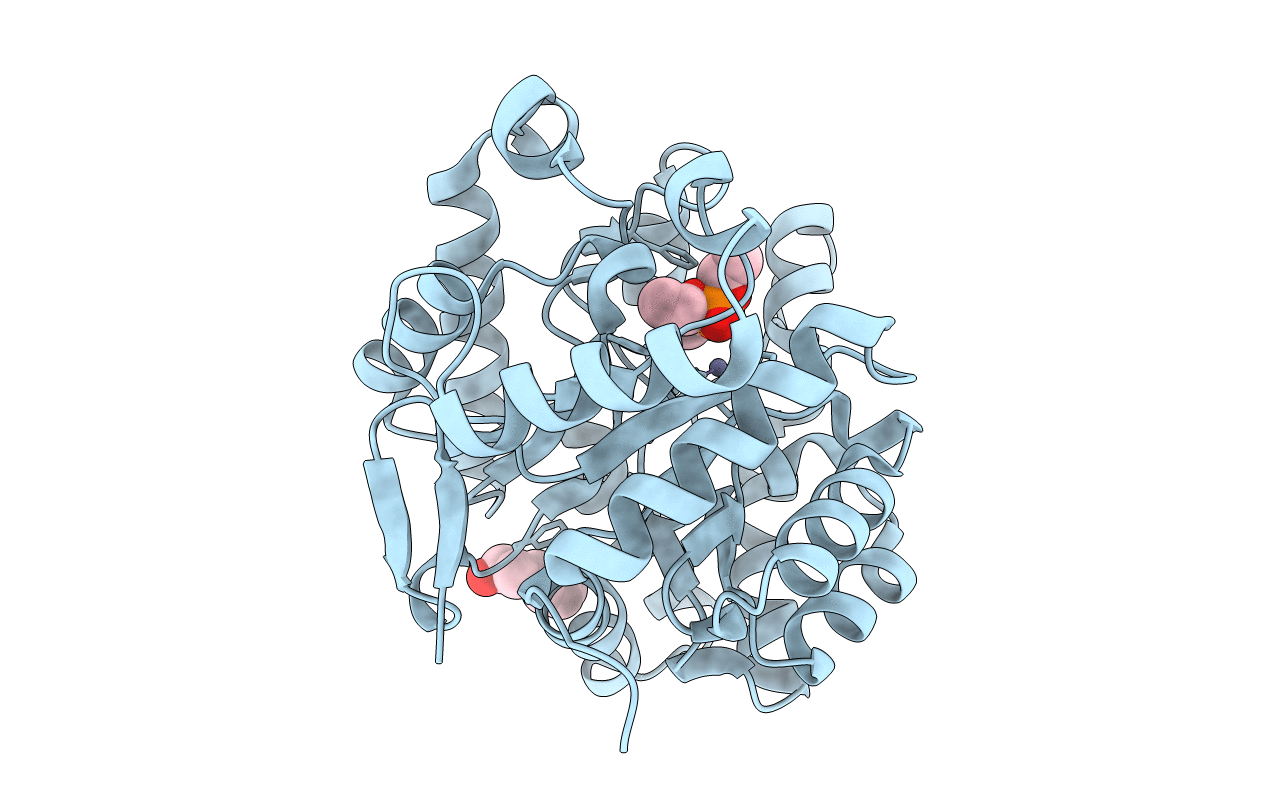
Deposition Date
2000-05-09
Release Date
2000-12-20
Last Version Date
2025-03-26
Entry Detail
PDB ID:
1EYW
Keywords:
Title:
THREE-DIMENSIONAL STRUCTURE OF THE ZINC-CONTAINING PHOSPHOTRIESTERASE WITH BOUND SUBSTRATE ANALOG TRIETHYLPHOSPHATE
Biological Source:
Source Organism:
Brevundimonas diminuta (Taxon ID: 293)
Host Organism:
Method Details:
Experimental Method:
Resolution:
1.90 Å
R-Value Observed:
0.14
Space Group:
C 2 2 21


